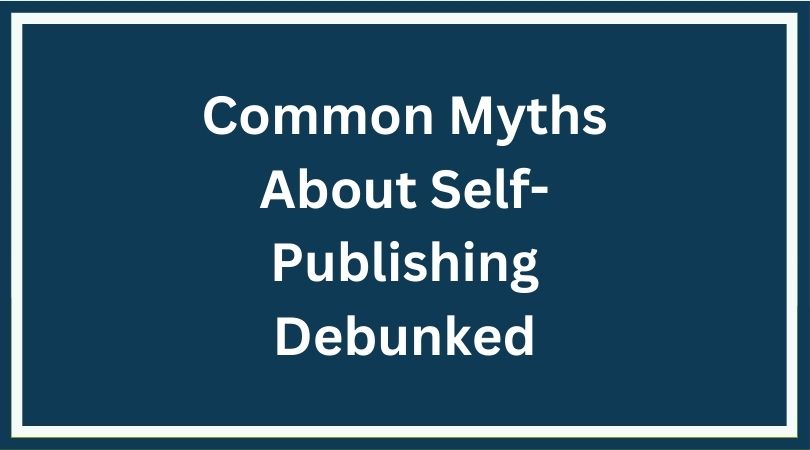How To Set Realistic Goals For Your Self-Publishing Journey

Introduction: The Importance of Setting Realistic Goals in Self-Publishing
Setting off on a self-publishing journey can feel like standing on the edge of a vast ocean, the horizon full of both promise and a bit of the unknown. It’s easy to get swept up in dreams of bestsellers and instant fame, but without solid goals, that’s like setting sail without a compass.
Self-publishing is its own beast, with unique challenges that traditional publishing doesn’t prepare you for. You’re not just the author; you’re the publisher, the marketer, the accountant, and sometimes even your own biggest fan. That’s why grounding yourself with realistic goals is not just useful—it’s necessary.
Good goal-setting isn’t about limiting your vision. It’s about creating a roadmap. Setting expectations based on what you can realistically achieve opens doors to sustainable progress while keeping stress levels in check. Think of it like laying bricks for a sturdy foundation. Each goal is a step toward your bigger picture.
But it’s not all straightforward. There are some common goal-setting traps folks often fall into, such as setting overly ambitious goals that lead to burnout, or not setting specific enough goals that result in a lack of direction. Ever set a New Year’s resolution that fizzled out by February? The same thing can happen here, but the stakes are higher because it’s your passion and maybe even your livelihood on the line.
So, taking the time to set thoughtful and realistic goals is essentially giving yourself a solid shot at turning your self-publishing dreams into a thriving reality.
Self-Assessment: Knowing Your Starting Point
Knowing exactly where you stand before you chase the dream is not just handy, it’s empowering. It’s like deciding on a road trip with a full tank of gas. Self-publishing is a varied landscape, and understanding your current abilities and resources lays the groundwork for what’s achievable. This self-assessment puts you in the driver’s seat of your journey.
Take a good, solid look at what you bring to the table. Are you a wordsmith with a flair for storytelling? Or maybe you’ve got marketing savvy that could make your book a must-read? Evaluating where your strengths lie can help in setting reasonable goals that align with what you’re naturally good at.
Not everything’s rosy, and that’s alright. Recognize your weaknesses or the areas you might struggle with. You may be confident in writing, but the thought of editing is daunting. Identifying these gaps means you can plan for solutions, whether it’s outsourcing editing or setting a personal deadline to improve your skills. This acknowledgment can relieve the anxiety of the unknown.
Knowing your starting point isn’t just about skill. It’s about the resources you can tap into. Time, budget, and support networks all count here. Being honest with what you have can stop you from veering off track later.
Establish a baseline to track your future successes. Imagine marking down a point on a map. Each step from there is a record of your journey. Seeing where you started versus where you are can motivate you to keep pushing forward.
Defining Success: What Does It Look Like for You?
Self-publishing means you’ve got the reins, so success starts with your vision, not some cookie-cutter ideal. Imagine opening that perfect little indie bookshop where your unique flair stands out—that’s what defining success on your own terms looks like.
Measuring success by industry standards, like sales figures or awards, is tempting. Still, these external metrics can feel hollow if they don’t align with your values. You might be aiming for personal satisfaction or influence over hitting bestseller lists.
Short-term wins are the stepping stones to long-term dreams. It could be finishing your first draft or getting that first positive review. Each tiny victory builds momentum.
Don’t lose the creative spark in the race for commercial success. The sweet spot is marrying what fires you up creatively with goals that also pay the bills. A balanced approach keeps the joy alive in your journey.
Setting these personal benchmarks isn’t just about measuring progress, it’s about crafting a path uniquely yours in the vast publishing world. It also reduces the pressure from unrealistic comparisons and maintains focus on what truly matters to you. This personalization empowers you to take control of your journey.
The SMART Technique: A Framework for Goal-Setting
Clear-cut goals can make all the difference, like a seasoned director calling the shots on set. That’s where the SMART framework comes into play. It’s a trusty guide that ensures your goals are solid, not just wishes on a vision board.
SMART stands for Specific, Measurable, Achievable, Relevant, and Time-bound. Each element is a checkpoint in your goal-setting process, keeping things tidy and manageable.
Shoot for specific goals. Instead of just saying, ‘write more,’ aim to complete a 50,000-word manuscript by the end of June.’ This is precise, giving you something concrete to work with.
Next up, Measurable goals mean you can track progress, like hitting word counts or keeping track of sales. Numbers give you a clear picture of how far you’ve come.
Achievable keeps you grounded. It’s easy to aim too high and set yourself up for burnout. Knowing your capacity makes the ‘A’ in SMART a reality check you’ll thank yourself for down the line.
Relevance ensures your goals align with your broader vision. If your focus is on building a niche audience, pouring all your efforts into social media followers might not be appropriate.
Finally, Time-bound gives you deadlines. Deadlines can be your best friend in maintaining momentum. They add urgency and help prioritize efforts. Setting a timeline keeps the drift at bay and maintains direction.
SMART goals break down those big dreams into pieces you can actually chew on. It’s less daunting and more structured, helping you confidently tackle each part of your self-publishing journey.
Resource Optimization: Making the Most of What You Have
Making the leap into self-publishing can feel like a one-person show, juggling a dozen tasks simultaneously. That’s why getting the most out of your resources is key. It helps you stay on track without burning out or eating into your finances.
Start by identifying what tools and resources you have available. From software for designing your book cover to platforms for distribution, the right tools can simplify your tasks. Free resources or software trials can be a perfect starting point if budgets are tight.
Budgeting is as much about time as it is about money. Time is finite, but it’s a potent resource when managed well. Create a schedule that dedicates time for writing, editing, and those all-important breaks to recharge.
You don’t have to go it alone. Leverage communities or find a mentor who’s been around the self-publishing block. There’s wisdom in shared experiences, and a helpful nudge from someone who’s been there before can steer you clear of common pitfalls.
Assess what tasks you can outsource. Spending some cash to hire an editor or a designer can save you headaches, especially if it’s not your area of expertise.
Resource optimization isn’t about running on fumes; it’s about fueling your self-publishing journey efficiently, ensuring every minute and dollar spent pushes you towards your goals.
Content Creation: Quality vs. Quantity Debate
When crafting something as deeply personal as a book, it’s easy to get caught between the push for more content and the pull towards producing something solid. Getting this balance right can define your self-publishing path.
Every seasoned creator knows who they’re speaking to. Understanding your target audience can guide you in creating content that resonates with them. After all, hitting the right note with your readers can be a game-changer for success.
It’s easy to get trapped in the hustle of cranking out material to stay visible. Quality stands the test of time—think about what your readers will engage with the most. It’s about what you’re saying and how well you’re saying it, not how often.
While prioritizing quality, keep your timelines realistic. A perfect book that’s never published won’t do much for you. Make time-bound plans that account for quality and allow you to stay on track with your publishing timeline.
Organize your process to manage the different facets of content creation. Segment tasks into writing, editing, and marketing to give each phase the attention it deserves while avoiding feeling overwhelmed. Good planning is about helping creativity flow without drying up.
Roadblocks and Resilience: Overcoming Obstacles
Any journey worth taking has its share of bumps and unexpected turns, and self-publishing is no different. Challenges are bound to pop up, but building resilience helps you tackle these roadblocks head-on.
One common hurdle is the overwhelming number of tasks you need to manage—from writing and editing to marketing. Breaking tasks into smaller chunks can make the monster more manageable. Create a timeline with specific milestones to track your progress, making each accomplishment a step up the ladder.
Criticism and rejection aren’t the easiest pills to swallow, yet they’re part of the package. Use them as a diagnostic tool instead of letting them derail your goals. Constructive criticism can highlight areas for improvement, leading to better future outputs.
Stay flexible in your approach. Sometimes, plans won’t pan out as expected, but being adaptable can turn apparent setbacks into stepping stones. Tweaking your strategy is not a sign of failure but a road to improvement.
Surround yourself with a support network. Whether it’s fellow writers, readers, or friends who believe in your vision, having people who can offer feedback or just a listening ear makes the bumps more bearable.
Keeping an eye on your mental wellbeing is vital. Creative burnout is a real thing, so take breaks where needed and don’t shy away from a reset if necessary. A little self-care goes a long way in keeping your passion alive.
If an obstacle seems insurmountable, remember why you started in the first place. Revisiting your motivation can reignite the spark, fueling the tough days and bringing you back to what truly matters in your self-publishing journey.
Evaluation and Adjustment: Staying Flexible and Motivated
The road to self-publishing is dynamic, and adaptability keeps you afloat in the shifting tides. Regular evaluation of where you stand with your goals is more than just a checkbox; it’s a vital part of the growth process.
Break down your progress and look at it from various angles: what’s working, what’s not, and where is there room for a fresh approach? This kind of active reflection doesn’t only apply to setbacks—celebrate what’s going well to motivate yourself further.
Goals aren’t set in stone. It’s normal for priorities to evolve as you grow and learn. Adjusting your goals to reflect your current position is a strength, not a weakness. Being open to change when needed keeps the momentum going.
Small victories count big time. They boost morale and help prevent burnout. Acknowledging these moments, whether it’s positive reader feedback or completing a writing phase, gives you a taste of success to inspire the next steps.
Stay in tune with the industry and your audience. The self-publishing scene changes rapidly, and what worked yesterday might need tweaking tomorrow. Keep an ear to the ground to stay relevant and responsive.
Tap into your initial drive regularly—the core reason you ventured into self-publishing. Connecting back to this can reinvigorate your efforts and remind you of your ultimate aspirations.
If enthusiasm wanes, mix things up a bit. Try a new writing location, switch up your routine, or explore creative exercises to refresh your outlook.
Staying motivated is as much about enjoying the journey as reaching the destination. Balancing tenacity with flexibility ensures you keep going with passion and purpose.






